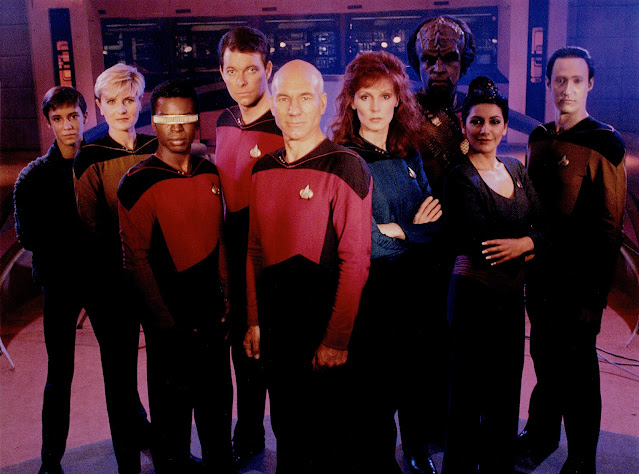Baby, I don't need dollar bills to have fun tonight
(I love cheap thrills).
Sia, Cheap Thrills
I do my PC gaming on a 27 inch iMac running Windows 10 via the
Apple Bootcamp software - I have complete Windows functionality, it
boots directly into Windows rather than running in a window in the Mac
OS, but it's an older computer that relies on a ten-year-old AMD Radeon R9 M290 video card
that wasn't that powerful in the first place.
That being said, it's
actually kept up well with my simple gaming interests, and I spend a certain
amount of time wistfully browsing Dell's Alienware™ gaming hardware page
and dreaming of what could be with the latest version of Battlefield 2042 running at full resolution.
Fortunately, thanks to the generosity of the gaming companies like Steam and Epic, there's an ongoing opportunity to get games that are reduced in price, or in some cases even free - cheap thrills, if you will. Epic is the strongest supporter of this, with a rotating pair of free downloads every week.
The games tend to be a few years old, but they're certainly not scrubs. My free Epic acquisitions to date include Shadow of the Tomb Raider, Guardians of the
Galaxy, the entire remastered Bioshock series, Star Wars Squadrons, and a
handful of less well known games. It's an admirable treatment of older games with excellent
playability that have been eclipsed by more advanced programs or sequels, and they fit nicely into the capabilities of my gaming setup, such as it is.
My latest Cheap Thrills acquisition is Titanfall 2, originally released by game developers Respawn Entertainment in 2016. Steam had the game on sale for a staggeringly affordable $3.99 CAD, which seemed like a manageable expense.
The original Titanfall, released in 2014, was a dedicated
multiplayer game without a single-player option, although it
did have an offline tutorial level that let players learn the game
controls before being exposed to online competition. I was aware
of the original's release, and watched a trailer video or two, but by and large I'm only really interested in
single-player gaming*- preferably first-person. As a result, it never made my play
list, in spite of my ongoing interest in operating giant robots.

The sequel attempts to be the best of both worlds, adding a single player option as an alternative to multiplayer encounters. Titanfall 2 features a narrative campaign in which you play as Jack Cooper, a rifleman in the Frontier Militia.
Your ambition is to pilot a Titan, a seven meter tall warbot with an AI
personality interface - Titans can be equipped with a wide range of
add-on weaponry and defenses, and have the ability to operate
autonomously as well as under the guidance of their pilot.
When Captain Tai Lastimosa falls in combat, you find yourself in the pilot's seat of his Vanguard-class Titan, BT7274 - aka BT - and part of the struggle to defend the Frontier from the Interstellar Manufacturing Corporation
The IMC abandoned the original settlers of the Frontier in the early
days of the colonies, but now they've decided to regain control by force.
A pre-game training sandbox called the Gauntlet allows players to hone
their skills before they start the game, which relies heavily on being able to jump, double jump and run along walls to complete challenges. The system also uses this
information to choose an appropriate difficulty setting for the game,
although it only took me two tries to upgrade from Easy to Normal.
Playing the game, I realize that I've been spoiled by the expansive nature of open-world games such as the Fallout franchise and The Outer Worlds, rather than the more linear goal-oriented parameters that Titanfall 2
relies on - it's very much what I think of as a level-based dungeon
game. Some of the levels, such as the manufacturing plant, are quite
large and complex, but ultimately, there's one entrance, and one exit.
Combat with the IMC forces offers the player a standard selection of hand weapons - light machine guns, sniper rifles, grenade launchers, and so on - and a similar range of loadouts and options for Titan to Titan battles. If I have one complaint about the game, I'd like to have seen more time spent in piloting my Titan in order to lock in weapon skills and defensive options.
The wallrunner/double jump challenges give the game a bit of a platformer
feel at times, but they're well integrated into the flow of the game,
and the developers have helpfully included a holographic guide that demonstrates the path that players need to take to reach their goal. Even with that guide, I struggled a bit with the exact angle of attack
to maximize my runs, but after a few fatal falls I seemed to have it
locked in.
Which is good, as it turned out, because wall running is definitely a crucial part of moving forward with the game. This can cause its own problems - as an example, it took me more than a
few tries to work out the exact jump kit/wall run timing for the trio of
generators in the Beacon level, to the point where I had almost given
up on the game.
I did eventually hit the right combination of running, jumping, and double jumping, after which I was relieved to see that the game did a save before subjecting me to any more barriers.
The addition of time travel capabilities adds some clever puzzles to the game. Your character obtains a time controller that lets them hop from the present to the past and back again as necessary
- it's a clever idea that requires the player to jump back to a
functional research facility in order to access undamaged passages and
bridges, and to jump back to the present to avoid security forces. At one point, it's necessary to coordinate time travel jumps to be able to travel along support walls that don't exist in the present, requiring a carefully timed series of literal leaps of faith.
Bottom line? It's an enjoyable challenging game. It's nicely locked into my difficulty zone so that it's demanding but not impossible (although I was starting to wonder during the Beacon level), the environments are well mapped out, detailed and visually interesting, it uses a standard interface pattern for all of the basic functions, making for a more manageable learning curve, and the various Titan weapon and defense choices provide an interesting strategic challenge in terms of selecting appropriate options for each opponent. As above, my primary interest is first person shooters, but the various platform/runner challenges are cleverly constructed and unexpectedly interesting.
Online estimates have the run time for the narrative storyline to be about six hours, which works out to sixty-six and a half cents an hour based on the price I paid - I didn't time my play, but it still sounds like a good return on investment to me.
- Sid
* I've had some minor experience with online arena gaming, but it doesn't
really speak to me - I'm much happier banging away at computer opponents
without having to deal with judgemental critiques of my skill level. As an example, I very much enjoyed the
original
Battlefield 2142, now sadly defunct, but I was completely
unprepared for the chaos of competing with dedicated human competitors
online when I attempted the co-op PVP mode.











































